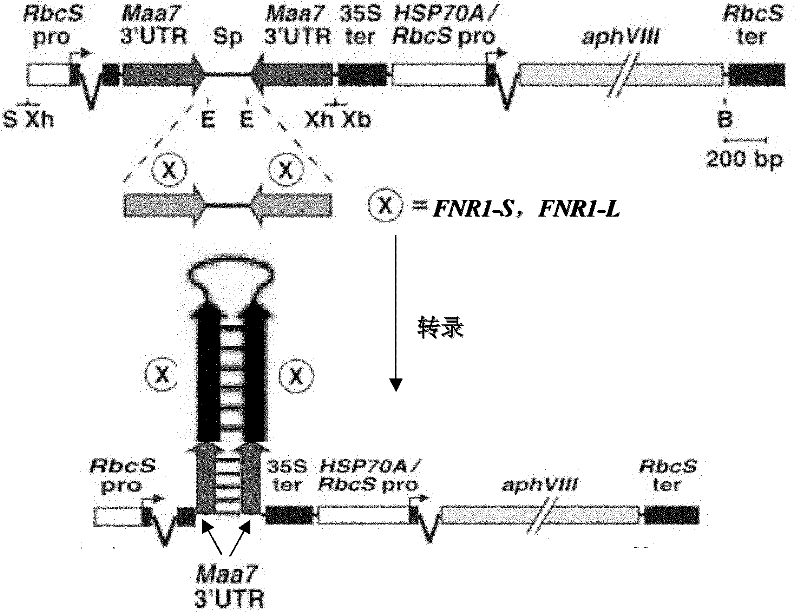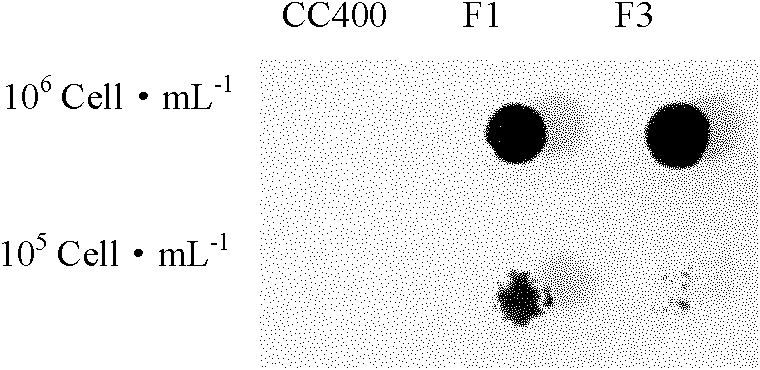Genetic engineering chlamydomonas having increased hydrogen producing capacity and application thereof
A technology of genetic engineering and Chlamydomonas, which is applied to genetically engineered Chlamydomonas with increased hydrogen production and its application fields, which can solve the problems of ineffective genetic transformation, unclear mechanism and regulation methods, and restrictions on the application of photosynthetic hydrogen production pathways in microalgae, etc. question
- Summary
- Abstract
- Description
- Claims
- Application Information
AI Technical Summary
Problems solved by technology
Method used
Image
Examples
Embodiment 1
[0034] Example 1. Reduce the expression level of FNR1 gene by RNA interference technology, and obtain the mutant Chlamydomonas with increased hydrogen production
[0035] Chlamydomonas reinhardtii (Chlamydomonas reinhardtii) strain CC-400 was purchased from Duke University's algae bank (Chlamycenter);
[0036] The Maa7 / XIR vector was purchased from the Chlamy center of Duke University;
[0037] E.coli DH5α strain was purchased from Bao Biological Engineering (Dalian) Co., Ltd., the product catalog number is D9057.
[0038] 1. Method
[0039] 1. Material cultivation
[0040] Prepare medium:
[0041] TAP liquid medium: NH 4 Cl 0.4g / L; MgSO 4 ·7H 2 O 0.1g / L; CaCl 2 2H 2 O 0.05g / L; K 2 HPO 4 0.108g / L; KH 2 PO 4 0.056g / L; Trisbase 2.423g / L; Hunter’s trace elements (Hunter’s trace elements) 1ml / L, glacial acetic acid 1ml / L, the rest is water;
[0042] Hunter trace elements: EDTA 50g / L; BO 3 h 3 11.4g / L; ZnSO 4 ·7H 2 O 22.0g / L; MnCl 2 4H 2 O 5.06g / L; FeSO 4 ·7H ...
PUM
 Login to View More
Login to View More Abstract
Description
Claims
Application Information
 Login to View More
Login to View More - R&D
- Intellectual Property
- Life Sciences
- Materials
- Tech Scout
- Unparalleled Data Quality
- Higher Quality Content
- 60% Fewer Hallucinations
Browse by: Latest US Patents, China's latest patents, Technical Efficacy Thesaurus, Application Domain, Technology Topic, Popular Technical Reports.
© 2025 PatSnap. All rights reserved.Legal|Privacy policy|Modern Slavery Act Transparency Statement|Sitemap|About US| Contact US: help@patsnap.com



